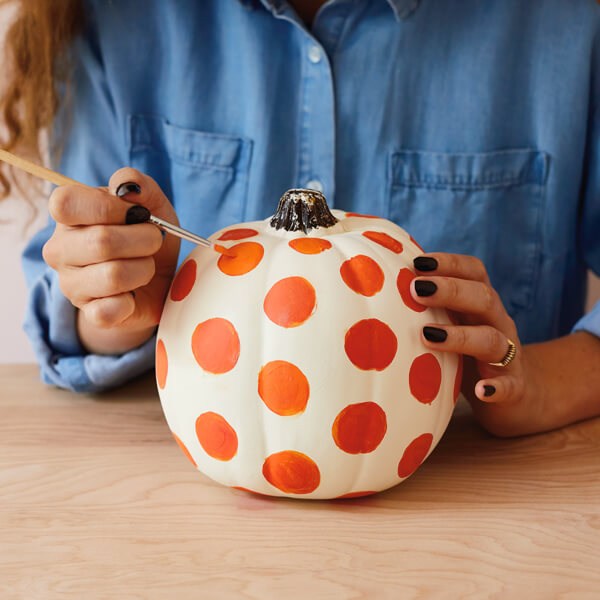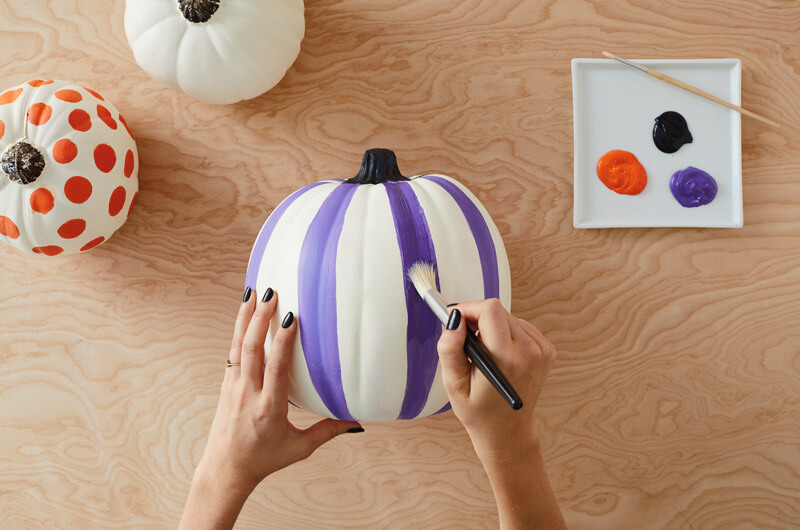Choose a simple colour palette. You can get your inspiration from
lots of different places: colours in a set, a photo you find online, or
(our favorite) a greeting card. We’ve got two—and we mixed our Crayola
paints to adjust the colours a bit:
- Bold and bright: orange (mix 1 part light red with two parts
yellow), purple (mix equal amounts of violet and white), black and
white.
- Modern pastel: coral (mix equal amounts white and light red), black and white.
Try designs on paper first. Of course, you can just jump in and
start painting. But for a cute and coordinated group of gourds, you
might try planning a bit. You can test out colours and patterns on a
plain piece of paper, play with the scale of different designs on
different pumpkin sizes, or make simple sketches to see how all your
looks will hang together.
Set up your space. Set out your pumpkins, paint, brushes, tape, etc., so you’re ready to go.
Double up on a single pumpkin. Try multiple techniques by painting different designs on the front and back of the same pumpkin.







